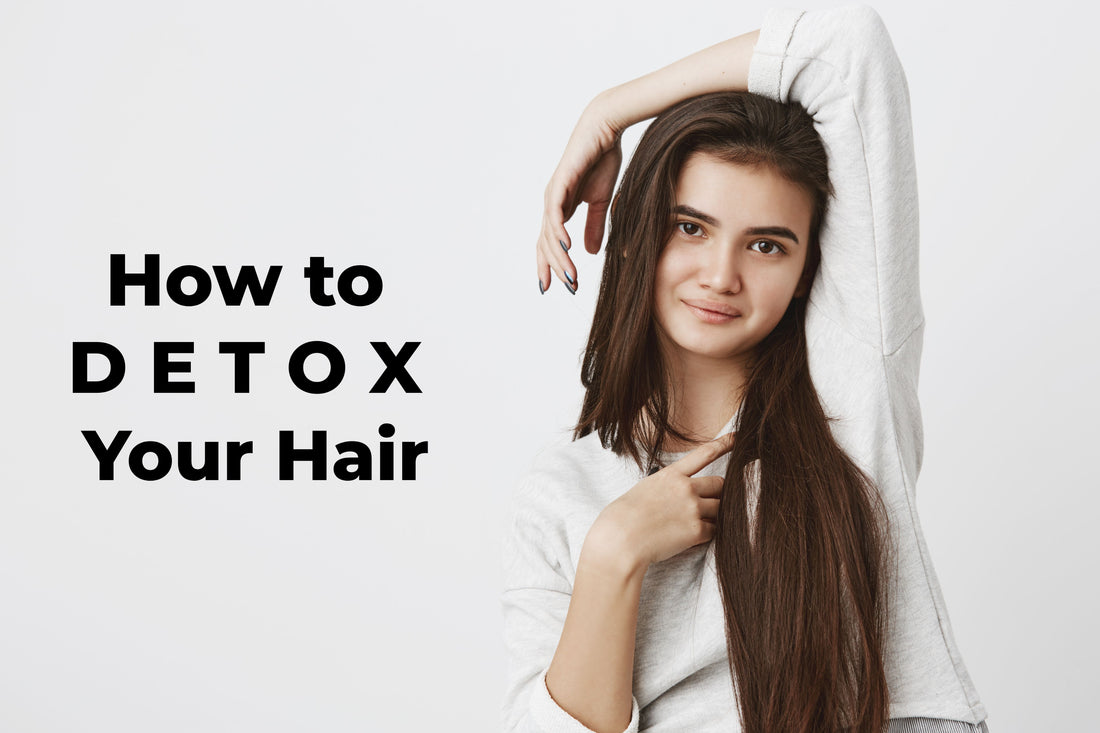
How to Detox Your Hair: Benefits and Methods
Hair detoxification is a growing trend for those seeking healthier, shinier, and more manageable hair. Over time, our hair accumulates dirt, oils, product buildup, and pollutants that can weigh it down and damage its structure. Detoxing your hair is the ultimate reset, restoring its vitality and enhancing overall scalp health. Here's everything you need to know about how to detox your hair, its benefits, and the best methods to achieve it.
1. What is Hair Detoxification?
Hair detoxification is a cleansing process designed to remove impurities from the scalp and hair strands. It focuses on eliminating product residue, excess oils, and environmental toxins, which can hinder hair growth and cause dullness.
Key Benefits of Hair Detox:
- Removes product buildup and pollutants.
- Promotes a clean, healthy scalp.
- Encourages natural hair growth.
- Improves hair texture and shine.
- Prevents dandruff and scalp irritation.
2. Why Should You Detox Your Hair?
Daily exposure to pollution, chemicals, and styling products takes a toll on your hair. A detox ensures your scalp can breathe, enabling hair follicles to function optimally.
Signs You Need a Hair Detox:
- Hair feels greasy shortly after washing.
- Scalp is itchy or flaky.
- Hair lacks volume and appears lifeless.
- Styling products no longer work effectively.
3. How Often Should You Detox Your Hair?
For most people, a hair detox once every 4–6 weeks is sufficient. However, if you use heavy styling products daily or live in a highly polluted area, detoxing every 2–4 weeks may be beneficial.
4. Methods to Detox Your Hair
Clarifying Shampoo
A clarifying shampoo is specifically designed to deeply cleanse the scalp and remove stubborn residues.
-
How to Use:
Use once every 2–4 weeks instead of your regular shampoo. Lather thoroughly and rinse with warm water. -
Pro Tip:
Look for sulphate-free clarifying shampoos to avoid stripping natural oils.
Baking Soda Rinse
Baking soda is a natural exfoliant that helps remove product buildup and impurities.
-
Recipe:
Mix 1 tablespoon of baking soda with 1 cup of water. Pour the mixture onto wet hair and massage gently. Rinse thoroughly.
Apple Cider Vinegar (ACV) Rinse
Apple cider vinegar balances your scalp’s pH levels and restores shine.
-
Recipe:
Dilute 2 tablespoons of ACV in 1 cup of water. Pour it over your hair after shampooing. Let it sit for 2–3 minutes, then rinse with cool water.
DIY Hair Detox Mask
A detox mask provides a deep cleanse while nourishing your hair.
Clay Detox Mask Recipe:
- Ingredients:
- 2 tablespoons of bentonite clay.
- 2 tablespoons of apple cider vinegar.
- 1 cup of water.
-
Directions:
Mix the ingredients into a paste. Apply it to your scalp and hair and leave it on for 20 minutes. Rinse thoroughly.
Tea Rinse
Herbal teas like green tea or chamomile soothe the scalp while removing toxins.
-
How to Use:
Brew a strong tea and let it cool. Pour it over your hair and let it sit for 15–20 minutes before rinsing.
5. Benefits of Hair Detoxification
-
Boosts Scalp Health
Detoxing unclogs hair follicles and promotes healthy hair growth by reducing scalp inflammation. -
Enhances Hair Appearance
Removing impurities reveals shinier, smoother, and more voluminous hair. -
Prevents Hair Thinning
By clearing buildup, detoxing allows nutrients to reach your hair roots effectively, reducing hair breakage. -
Balances Oil Production
Regular detoxes prevent excessive oiliness by regulating sebum production on the scalp. -
Eliminates Dandruff
Detoxification helps combat dandruff by removing dead skin cells and balancing moisture levels.
6. Ingredients to Include in Hair Detox
- Activated Charcoal: Absorbs toxins and impurities.
- Aloe Vera: Soothes and hydrates the scalp.
- Tea Tree Oil: Fights dandruff and bacterial buildup.
- Rosemary Oil: Stimulates blood circulation for better hair growth.
- Lemon Juice: Acts as a natural cleanser and adds shine.
7. Precautions While Detoxing Hair
- Avoid over-detoxing, as it can strip your hair of natural oils.
- Always follow up with a hydrating conditioner to prevent dryness.
- Test DIY recipes on a small patch to avoid allergic reactions.
8. Maintaining Detoxed Hair
After detoxing, adopt habits to keep your hair clean and healthy:
- Use a sulphate-free shampoo and conditioner.
- Limit heat styling tools.
- Protect your hair from pollution and UV rays with a scarf or hat.
- Avoid overusing styling products like gels and sprays.
FAQs About Hair Detoxification
1. What is the best way to detox your hair naturally?
The apple cider vinegar rinse is one of the most effective natural methods for detoxing hair.
2. Can hair detox help with hair growth?
Yes, detoxing removes buildup that can clog follicles, promoting better hair growth.
3. Is detoxing suitable for color-treated hair?
Yes, but opt for gentler methods like an ACV rinse or sulphate-free clarifying shampoos to avoid fading color.
4. Can I detox my hair every week?
Weekly detoxing may be too harsh for most people. Stick to a schedule of once every 4–6 weeks unless your hair requires more frequent cleansing.
5. Does hair detox help with dandruff?
Yes, detoxing removes the buildup of dead skin and oils that contribute to dandruff.
6. Are there any side effects of detoxing your hair?
If done too frequently or with harsh products, it can lead to dryness or irritation. Always follow up with a moisturizing treatment.
Conclusion
Detoxing your hair is a rejuvenating process that revitalizes both your scalp and strands, restoring their natural health and beauty. With the right methods and ingredients, you can eliminate buildup, enhance hair growth, and improve your hair’s texture and shine. Make hair detoxification a regular part of your routine, and enjoy the benefits of refreshed, healthier locks.
